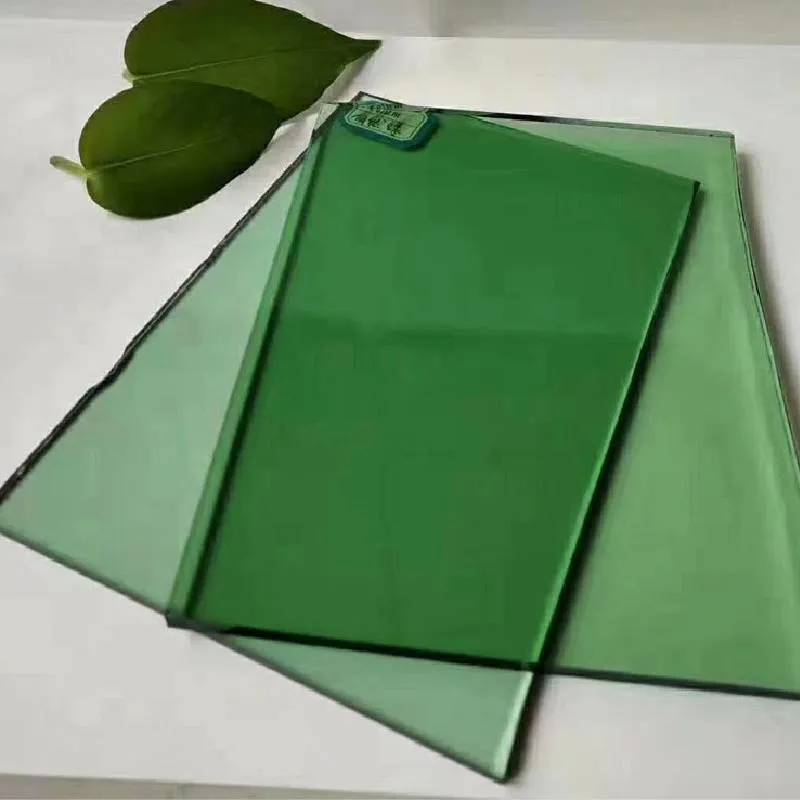The Benefits and Applications of Tinted Glass
Tinted glass has become increasingly popular in modern architecture and design, offering a range of benefits that enhance both aesthetic appeal and functional performance. With its ability to reduce glare, manage heat, and provide privacy, tinted glass is an excellent choice for residential and commercial buildings alike.
One of the primary advantages of tinted glass is its ability to control solar heat gain. By filtering out excessive sunlight, tinted glass helps maintain a comfortable indoor temperature, reducing the reliance on air conditioning systems. This feature is particularly beneficial in regions with intense sunlight, where cooling costs can soar during the summer months. Buildings equipped with tinted glass often report lower energy bills, making them more environmentally friendly and cost-effective over time.
In addition to thermal management, tinted glass plays a crucial role in glare reduction. Glare can be uncomfortable and even harmful, leading to eye strain and headaches. By limiting the amount of light that enters a space, tinted glass helps create a more comfortable environment, especially for offices and homes with large windows that face the sun. This enhancement increases productivity in workspaces while also improving overall well-being for occupants.
tinted glass
Furthermore, tinted glass offers increased privacy without sacrificing natural light. Many urban environments face challenges related to privacy from neighboring buildings. Tinted glass serves as an effective barrier, preventing outsiders from peering in while still allowing occupants to enjoy daylight. This balance of privacy and light is ideal for residential properties, hotels, and commercial offices, where maintaining a sense of openness is essential.
In terms of aesthetics, tinted glass can significantly elevate the visual appeal of a building. Available in various shades and colors, it allows architects and designers to create unique façades that reflect the desired image of a brand or residence. For instance, darker tints can impart a modern, sleek look, while lighter tints may evoke a more classic or elegant appearance. This versatility makes tinted glass an ideal choice for many architectural styles, from contemporary skyscrapers to traditional homes.
From a safety perspective, tinted glass can also provide increased security. The added UV protection reduces the fading of furniture and interior decor, prolonging their lifespan. Additionally, certain types of tinted glass are designed to be shatter-resistant, offering an extra layer of protection against break-ins and accidents.
Overall, the use of tinted glass in architecture and design provides myriad benefits that enhance the functionality and aesthetics of a space. With its energy-saving properties, glare reduction, privacy enhancements, and stylish options, tinted glass is a smart choice for those looking to improve their buildings. As the demand for sustainable and visually appealing solutions continues to rise, tinted glass is likely to remain a prominent feature in both residential and commercial developments. Its ability to blend practicality with beauty makes it an essential material in modern architectural design.
 Afrikaans
Afrikaans  Albanian
Albanian  Amharic
Amharic  Arabic
Arabic  Armenian
Armenian  Azerbaijani
Azerbaijani  Basque
Basque  Belarusian
Belarusian  Bengali
Bengali  Bosnian
Bosnian  Bulgarian
Bulgarian  Catalan
Catalan  Cebuano
Cebuano  Corsican
Corsican  Croatian
Croatian  Czech
Czech  Danish
Danish  Dutch
Dutch  English
English  Esperanto
Esperanto  Estonian
Estonian  Finnish
Finnish  French
French  Frisian
Frisian  Galician
Galician  Georgian
Georgian  German
German  Greek
Greek  Gujarati
Gujarati  Haitian Creole
Haitian Creole  hausa
hausa  hawaiian
hawaiian  Hebrew
Hebrew  Hindi
Hindi  Miao
Miao  Hungarian
Hungarian  Icelandic
Icelandic  igbo
igbo  Indonesian
Indonesian  irish
irish  Italian
Italian  Japanese
Japanese  Javanese
Javanese  Kannada
Kannada  kazakh
kazakh  Khmer
Khmer  Rwandese
Rwandese  Korean
Korean  Kurdish
Kurdish  Kyrgyz
Kyrgyz  Lao
Lao  Latin
Latin  Latvian
Latvian  Lithuanian
Lithuanian  Luxembourgish
Luxembourgish  Macedonian
Macedonian  Malgashi
Malgashi  Malay
Malay  Malayalam
Malayalam  Maltese
Maltese  Maori
Maori  Marathi
Marathi  Mongolian
Mongolian  Myanmar
Myanmar  Nepali
Nepali  Norwegian
Norwegian  Norwegian
Norwegian  Occitan
Occitan  Pashto
Pashto  Persian
Persian  Polish
Polish  Portuguese
Portuguese  Punjabi
Punjabi  Romanian
Romanian  Russian
Russian  Samoan
Samoan  Scottish Gaelic
Scottish Gaelic  Serbian
Serbian  Sesotho
Sesotho  Shona
Shona  Sindhi
Sindhi  Sinhala
Sinhala  Slovak
Slovak  Slovenian
Slovenian  Somali
Somali  Spanish
Spanish  Sundanese
Sundanese  Swahili
Swahili  Swedish
Swedish  Tagalog
Tagalog  Tajik
Tajik  Tamil
Tamil  Tatar
Tatar  Telugu
Telugu  Thai
Thai  Turkish
Turkish  Turkmen
Turkmen  Ukrainian
Ukrainian  Urdu
Urdu  Uighur
Uighur  Uzbek
Uzbek  Vietnamese
Vietnamese  Welsh
Welsh  Bantu
Bantu  Yiddish
Yiddish  Yoruba
Yoruba  Zulu
Zulu 

